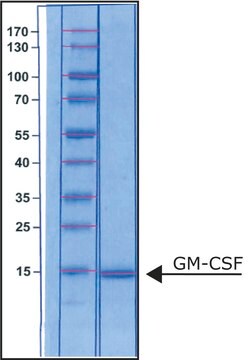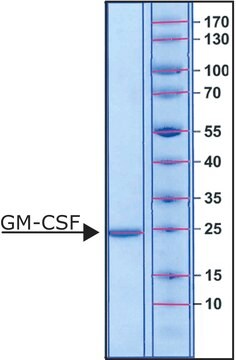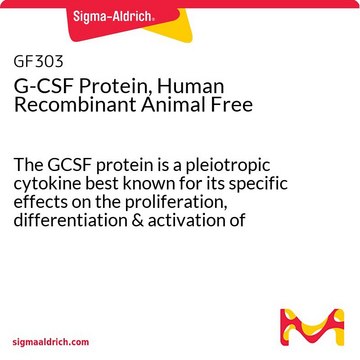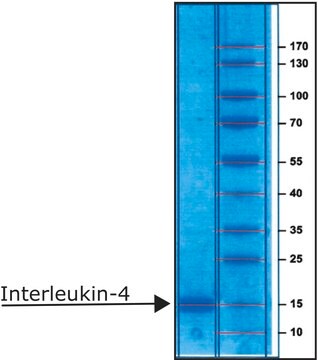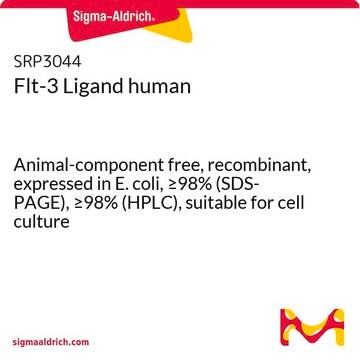G8160
Granulocyte Colony-Stimulating Factor from mouse
>97% (SDS-PAGE), recombinant, expressed in E. coli, lyophilized powder, suitable for cell culture
Sinonimo/i:
G-CSF
About This Item
Prodotti consigliati
Nome del prodotto
Granulocyte Colony-Stimulating Factor from mouse, G-CSF, recombinant, expressed in E. coli, suitable for cell culture
Origine biologica
mouse
Livello qualitativo
Ricombinante
expressed in E. coli
Saggio
>97% (SDS-PAGE)
Stato
lyophilized powder
Potenza
10-60 pg/mL ED50
Qualità
endotoxin tested
PM
19 kDa (179 amino acids including N-terminal methionine)
Confezionamento
pkg of 5 and 25 μg
Condizioni di stoccaggio
avoid repeated freeze/thaw cycles
tecniche
cell culture | mammalian: suitable
Impurezze
≤0.01 EU/μg
N° accesso UniProt
Temperatura di conservazione
−20°C
Informazioni sul gene
mouse ... Csf3(12985) , Csf3r(12986)
Descrizione generale
Applicazioni
Azioni biochim/fisiol
Stato fisico
Risultati analitici
Note legali
Prodotti correlati
Avvertenze
Warning
Indicazioni di pericolo
Consigli di prudenza
Classi di pericolo
Eye Irrit. 2 - STOT SE 3
Organi bersaglio
Respiratory system
Codice della classe di stoccaggio
11 - Combustible Solids
Classe di pericolosità dell'acqua (WGK)
WGK 3
Punto d’infiammabilità (°F)
Not applicable
Punto d’infiammabilità (°C)
Not applicable
Dispositivi di protezione individuale
Eyeshields, Gloves, type N95 (US)
Scegli una delle versioni più recenti:
Possiedi già questo prodotto?
I documenti relativi ai prodotti acquistati recentemente sono disponibili nell’Archivio dei documenti.
Il team dei nostri ricercatori vanta grande esperienza in tutte le aree della ricerca quali Life Science, scienza dei materiali, sintesi chimica, cromatografia, discipline analitiche, ecc..
Contatta l'Assistenza Tecnica.
